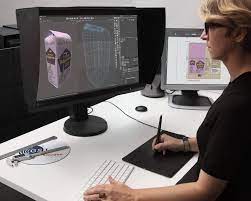Physical Address
304 North Cardinal St.
Dorchester Center, MA 02124

From mesmerizing animated movies to jaw-dropping action sequences in blockbuster films, CGI (Computer-Generated Imagery) has become a cornerstone of modern cinematic magic. Yet, with its prevalence, a recurring question arises: Why is CGI so expensive? Let’s break it down.
1. Manpower and Expertise:
CGI isn’t just about hitting a few buttons on a computer; it requires a team of highly skilled artists, animators, and technicians. The level of detail and realism that audiences demand today needs experts who specialize in different CGI aspects, such as modeling, texturing, lighting, and rigging. These professionals command competitive salaries reflective of their unique skills and the industry’s demands.
2. Time-Intensive Process:
Contrary to popular belief, CGI doesn’t always simplify filmmaking. A single frame with CGI can take hours or even days to render, depending on the scene’s complexity. With movies typically running at 24 frames per second, the computational time for just a minute of detailed CGI can be staggering.
3. High-End Software and Licensing:
The software used to create CGI effects is cutting-edge and comes with a hefty price tag. Licensing these tools for a production house can be a significant expense. Moreover, studios often require multiple licenses for various parts of the production process.
4. Expensive Hardware Requirements:
It’s not just the software that’s expensive. High-quality CGI requires powerful workstations and, often, entire server farms to render scenes. The electricity costs for running these machines, combined with the initial investment in the hardware, contribute significantly to CGI’s overall cost.
5. Constant Evolution and R&D:
As audiences become more discerning, the push for more realistic and innovative CGI grows. This continuous evolution means companies have to invest in research and development regularly. Any new technique or breakthrough can necessitate further training, new software, or even hardware upgrades.
6. Iterative Nature:
A CGI scene isn’t usually perfect on the first try. It undergoes multiple revisions based on directorial feedback, test audience reactions, or technical considerations. Each iteration adds to the time and resources spent on a particular scene.
7. Integration with Live-Action:
When CGI is used in live-action movies, integrating the virtual elements with the real-world footage seamlessly is a challenging task. It requires motion tracking, color matching, and ensuring that the lighting on the CGI elements matches the actual scene’s lighting. This integration is a meticulous process that adds layers of complexity and, consequently, costs.
Conclusion:
While the price tag of CGI can be high, its value is undeniable. CGI allows filmmakers to bring the impossible to life, create worlds without physical boundaries, and tell stories that were once considered unfeasible. Understanding the intricacies behind CGI helps us appreciate the magic on screen even more. The next time you’re spellbound by a dragon’s flight or a distant galaxy, you’ll have a deeper appreciation for the immense work and resources that made it possible.